
You’re in for a treat! Imagine tender, cinnamon-infused short ribs, braised to perfection, paired with a medley of fresh seasonal vegetables.
It’s a mouthwatering dish you can’t resist. You’re not just cooking here, you’re creating an unforgettable culinary experience.
Gathering Your Ingredients
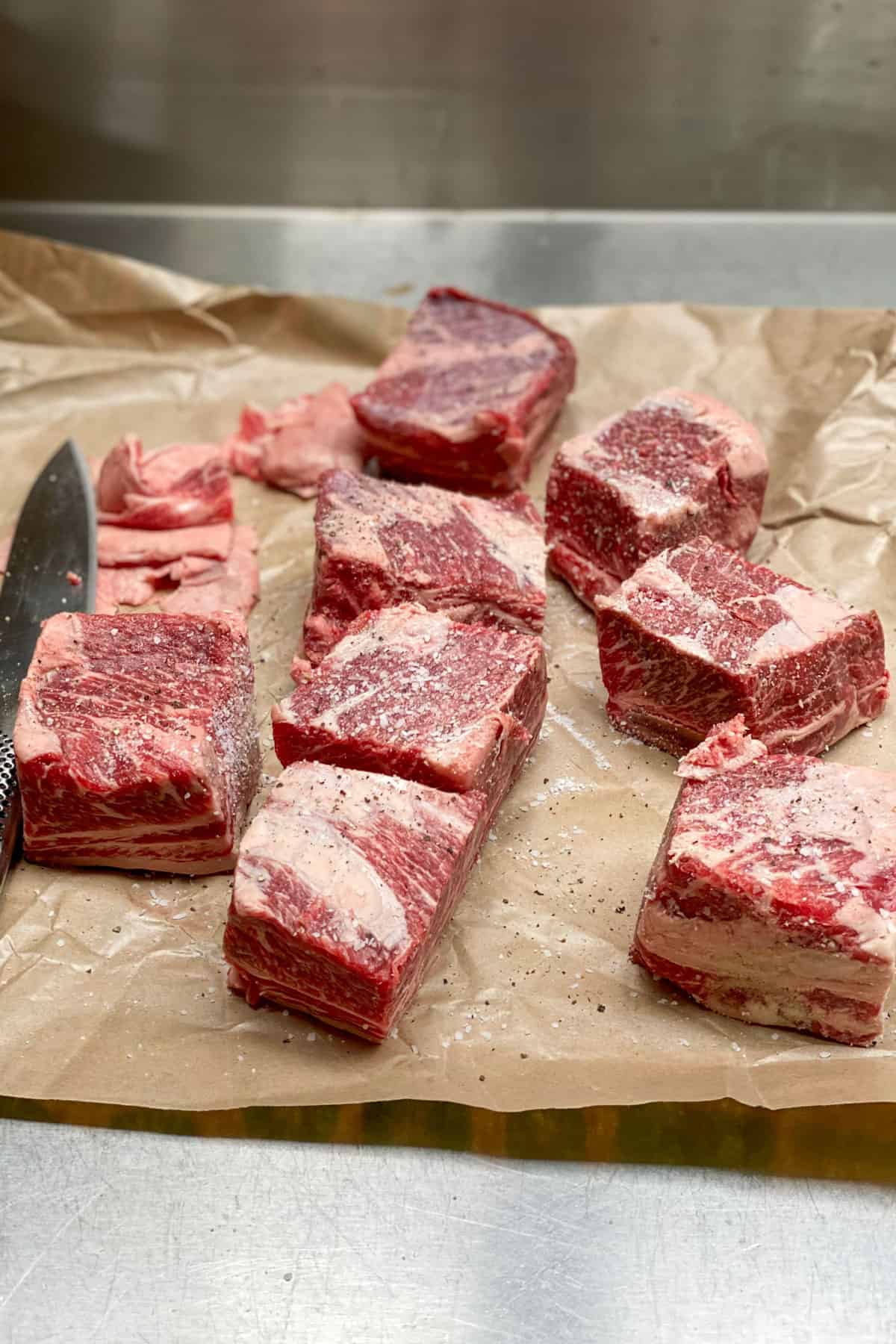
Before you start cooking, you’ll need to round up all the necessary ingredients for your cinnamon braised short ribs and seasonal vegetables.
You’ll need:
- Quality beef short ribs
- A good selection of seasonal veg
- An aromatic blend of spices including cinnamon sticks
- A hearty red wine
Don’t forget your cooking essentials like:
- Olive oil
- Salt
- Pepper
You’ll also need some:
- Garlic
- Onions
- Fresh herbs to bring out the depth of flavors
And of course, you can’t forget the star of the show:
- A high-quality beef stock
It’s essential to have all these items on hand before you begin. This way, you’ll avoid any last-minute grocery store runs and can focus on crafting a delicious meal.
Preparing the Short Ribs
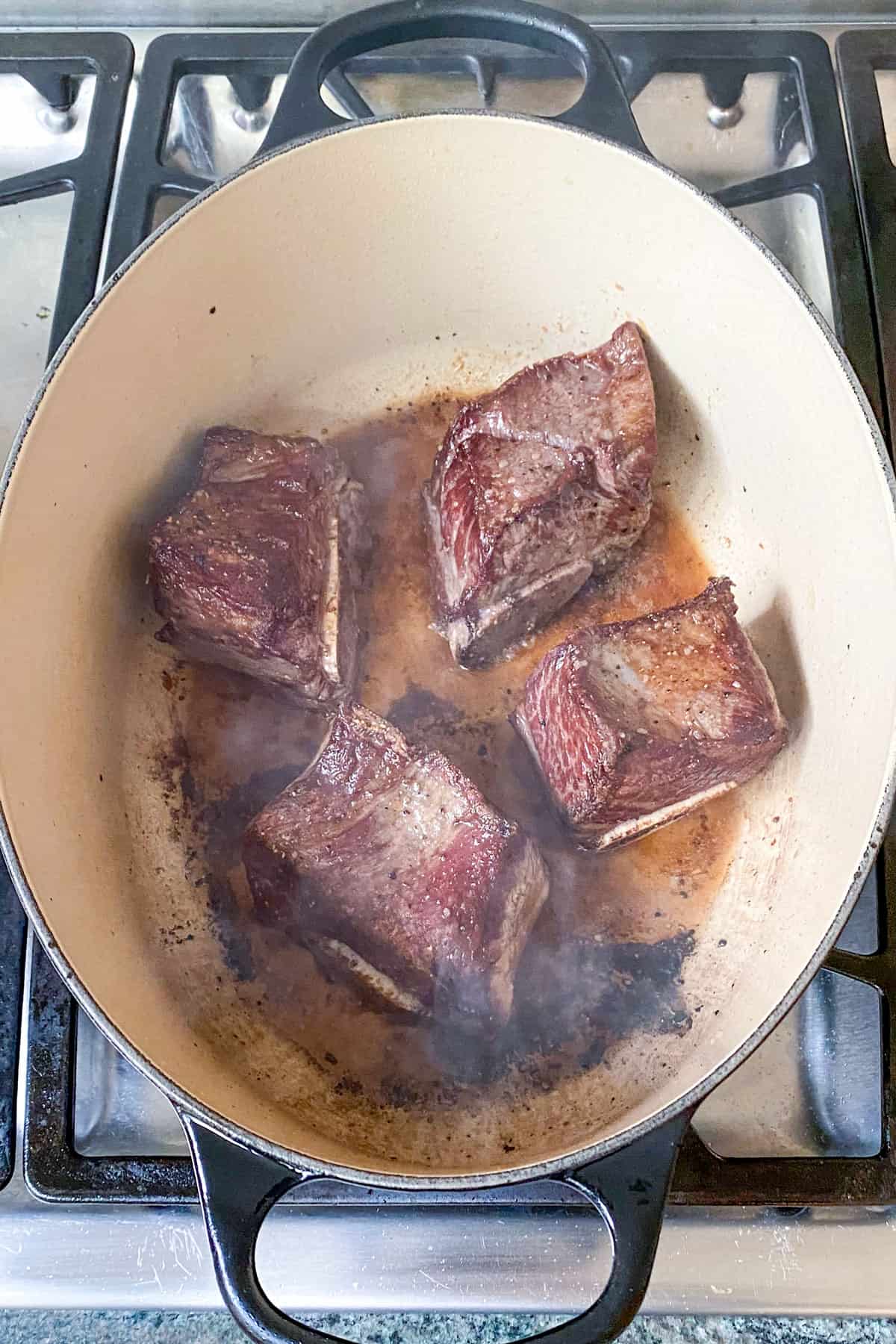
First, you’ll need to thoroughly pat dry your beef short ribs with paper towels. This step is crucial as it ensures your ribs brown evenly during the searing process. Once they’re dry, season generously with salt and pepper. Don’t skimp on this step, as it helps build the flavor profile of your dish.
The next step is searing. Heat a large Dutch oven or heavy-bottomed pot over medium-high heat. Add a splash of oil, then place your ribs in the pot. Sear each side until it’s beautifully browned. This creates a rich, deep flavor that’s the cornerstone of your dish.
Once browned, remove the ribs from the pot. They’re now ready for the braising stage, where they’ll become tender and succulent.
The Braising Process
Now that you’ve perfectly seared your short ribs, it’s time to delve into the braising process, a crucial part where your ribs will soak up a myriad of flavors and turn mouthwateringly tender.
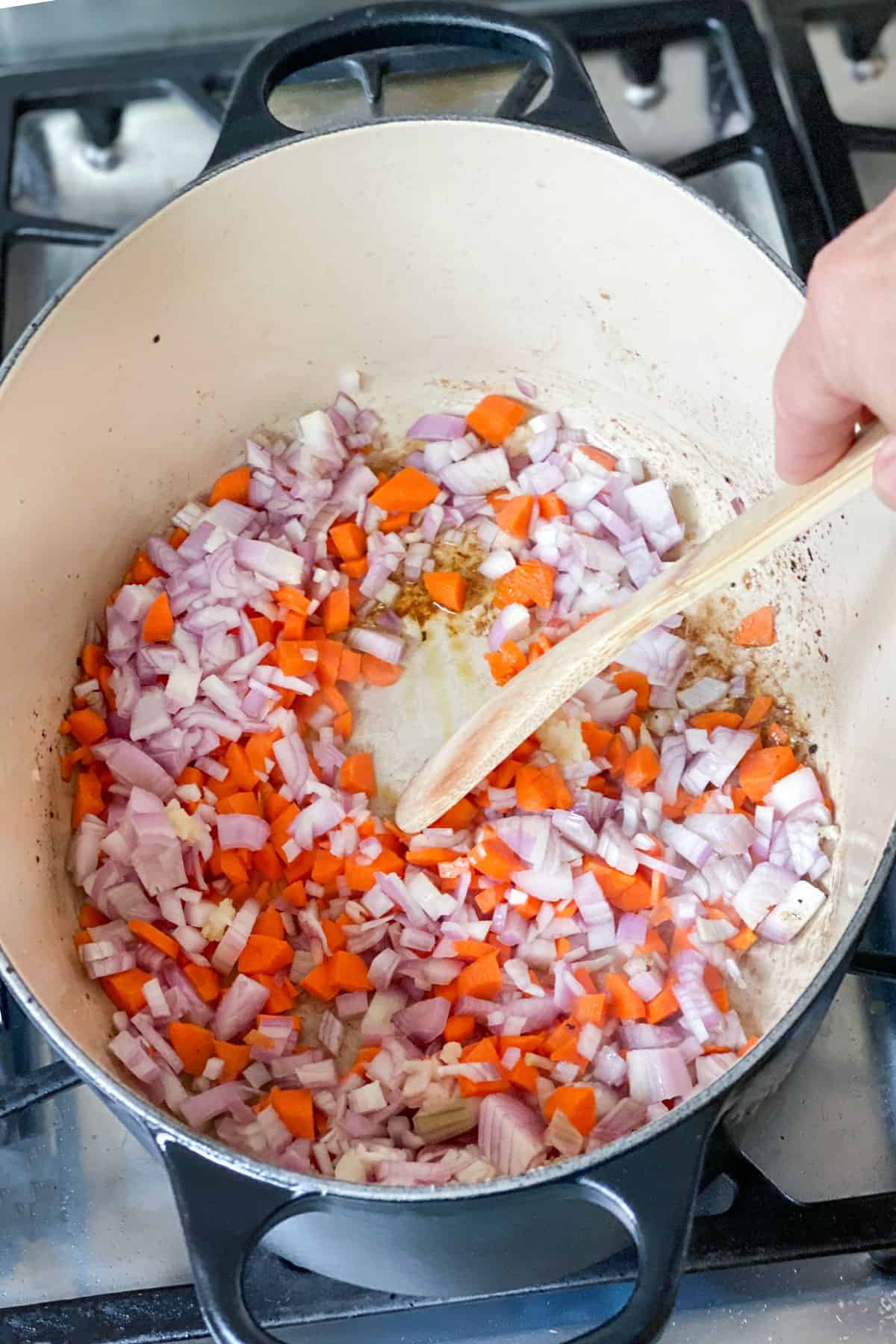
Start by arranging your ribs in a deep pot, then add a hearty mix of aromatics – think garlic, onions, and a cinnamon stick for a warm, spicy touch. Pour in enough stock to almost cover the ribs. This liquid is key; it’ll break down the tough meat during long, slow cooking, making it succulent and rich.
Cover the pot, then slide it into a low-temperature oven. Be patient, this process can’t be rushed. You’re aiming for ribs that are so tender, they practically fall off the bone.
Enjoy the anticipation!
Cooking the Seasonal Vegetables
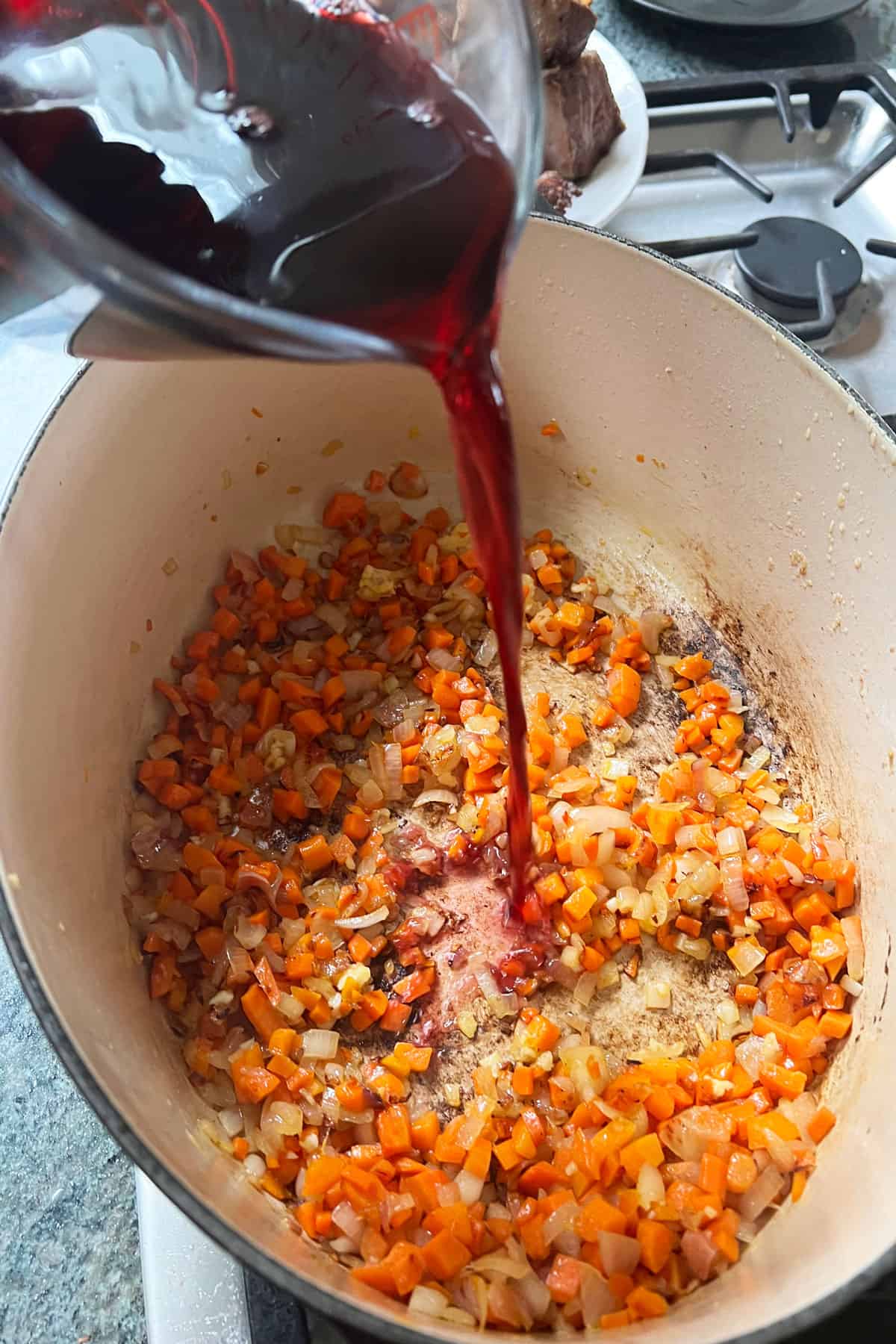
Once your ribs are routinely simmering away, it’s time for you to turn your attention to the seasonal vegetables. Select those looking freshest at your local market – think carrots, parsnips, or potatoes for a hearty dish. Start by washing them thoroughly, then chop into bite-sized pieces for even cooking.
In the same pot used for your ribs, sauté your vegetables in a splash of olive oil. It’s crucial to cook them on medium heat, stirring frequently to prevent burning. You’re aiming for a light caramelization that’ll add depth to your dish.
Once they’ve softened and gained a bit of color, deglaze the pot with a splash of broth. These beautifully cooked vegetables will complement the richness of your braised ribs perfectly.
Serving and Presentation Suggestions
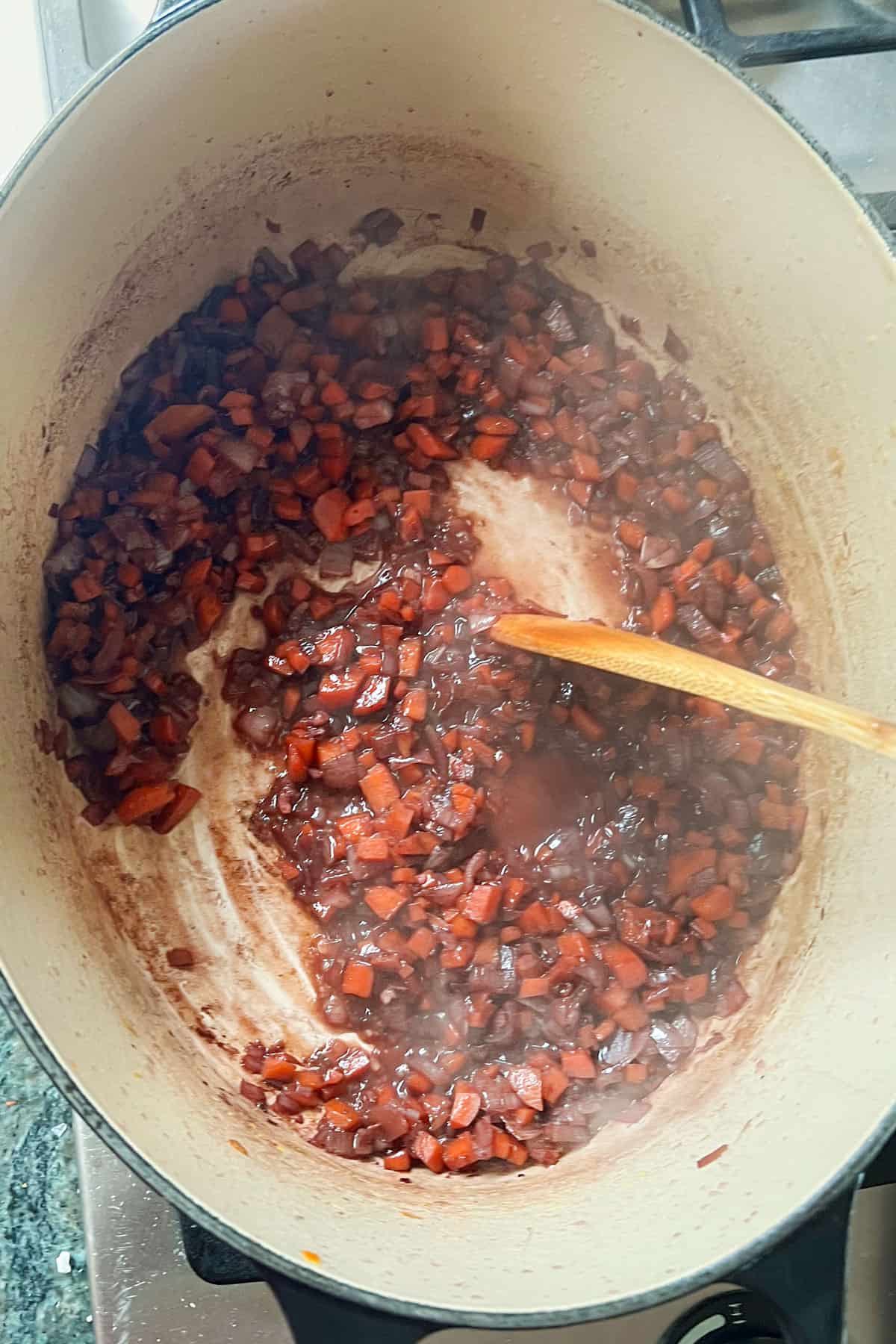
After carefully cooking your vegetables and ribs, it’s time to consider how you’ll plate this hearty dish to truly showcase its mouthwatering appeal.
Start by placing a generous portion of the tender, cinnamon-infused ribs in the center of a warm plate.
Arrange the vibrant, seasonal vegetables around the ribs, adding color and contrast.
Pour a small amount of the rich, aromatic sauce over the ribs, letting it pool slightly on the plate.
Garnish with a sprinkle of fresh herbs for an extra pop of color and freshness.
Remember, the key to a visually appealing plate is balance. Don’t overcrowd the plate, instead, let each component shine.
Frequently Asked Questions
What Are Some Suitable Wine Pairings for This Dish?
You’re asking about wine pairings, aren’t you? A full-bodied red like a Cabernet Sauvignon or a Syrah would be ideal. They’ve got the robust flavors that can stand up to a rich, hearty dish.
Can I Use a Slow Cooker Instead of Braising the Short Ribs?
Absolutely, you can use a slow cooker. It’s an excellent alternative to braising. Just ensure you’re still searing the ribs before slow cooking them.
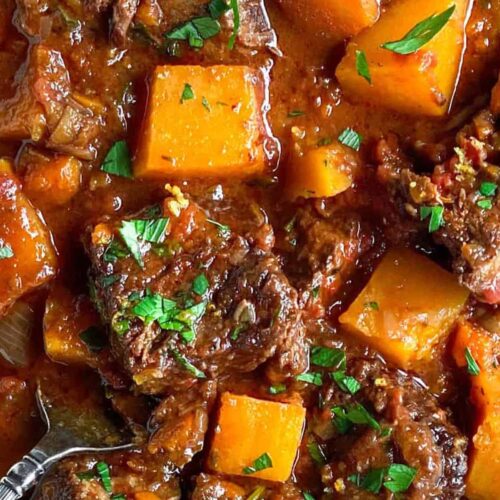
Cinnamon Braised Short Ribs With Seasonal Vegetables
Ingredients
- 8-10 sprigs fresh thyme
- 4-5 sprigs fresh rosemary
- Light olive oil or canola oil
- 4 pounds of beef short ribs on the bone
- 1 tablespoon kosher salt divided
- 3 carrots scraped and roughly chopped
- 4 large shallots roughly chopped (1 cup chopped shallots)
- 2 large garlic cloves crushed
- 1 ⅔ cups red wine see notes
- 1 28- ounce can of good quality whole plum tomatoes with their juice chopped or crushed by hand
- Zest of ½ orange removed in long strips using a vegetable peeler, the strips stacked and thinly sliced cross-wise
- 2 bay leaves
- 2 cinnamon sticks
- 2 star anise
- 1 teaspoon freshly ground black pepper
- 4 cups cubed butternut squash 1 ½ pounds
- 1 ¼ cups water
- 2-3 tablespoons hopped flat-leaf parsley to garnish
- Grated zest of 1 large lemon to garnish
Instructions
- Preheat oven to 325ºF/165ºC
- Tie thyme and rosemary sprigs together with kitchen twine and set aside.
- Place short ribs on a large plate or parchment-covered sheet pan and pat dry with paper towels. Season with 2 teaspoons of salt, turning the ribs to coat them on all sides.
- Heat 2 tablespoons oil in pot over medium-high heat until hot (starting to wrinkle) and sear the ribs in 2 or 3 batches so as not to crowd the pan, browning them on all sides, about 5 minutes per batch, and transfer them to a large bowl.
- Remove the pot from the heat and pour off all the fat. Set the pot over medium heat and add 1 tablespoon oil. Add the shallots and carrots and cook, stirring occasionally, for 6-8 minutes, until the vegetables start to brown. Add the garlic and cook, stirring, for 1 minute.
- Add the wine and scrape the bottom of the pot with a wooden spoon to mix in any flavorful bits stuck on the bottom. When the wine comes to a boil, lower the heat and simmer until the wine has almost evaporated, about 8 minutes.
- Add the tomatoes, thyme and rosemary, orange zest, bay leaves, cinnamon, star anise, black pepper, and 1 teaspoon salt. Stir to combine.
- Return beef to the pot, along with any accumulated juices, sinking the ribs down into the sauce and spooning some sauce over them. When the sauce returns to a simmer, cover the pot, transfer it to the oven and cook for 2 hours, undisturbed.
- Remove pot from oven. Lift the ribs from the sauce with tongs and place them in a large bowl. Set them aside.
- Degrease (de-fat) the sauce by using a pot holder to carefully tilt the pot a little until the clear fat flows to one side in a pool. Use a tablespoon to scoop out as much of the fat as you can easily remove, without taking any of the sauce. (see notes)
- Add the 1 ¼ cups water and the squash to the pot and bring to a simmer. Cover and cook gently for 20-25 minutes, until the squash is tender.
- While the squash simmers, tend to the meat, which should be tender and practically falling off the bones. Pull the bones out and cut the meat into bite-sized pieces.
- When the squash is tender, remove the bay leaves, herb stems, cinnamon sticks and star anise from the stew. Return the meat to the pot and simmer for a few minutes until the meat is heated through. Taste the stew and add additional salt and pepper, if needed.
- Mix the parsley with the lemon zest and sprinkle it over the stew and serve. Or ladle the stew into individual serving bowls and garnish each one with parsley and lemon zest.
Notes
This locks in flavour and gives them a great texture.
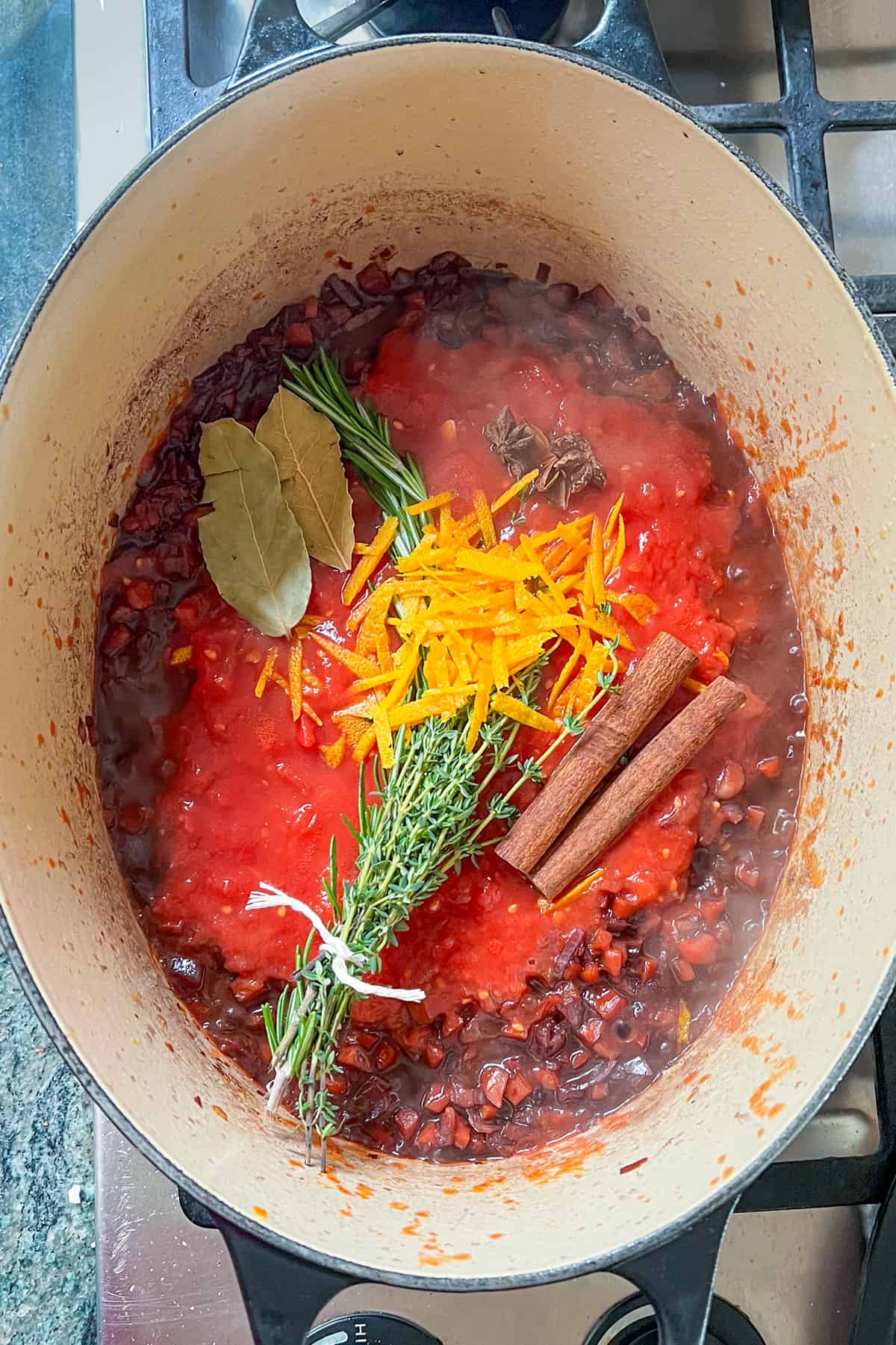
Is There a Vegetarian Alternative for This Recipe?
Sure, you can create a vegetarian alternative! Swap the short ribs with hearty veggies like portobello mushrooms or eggplant. They’ll absorb the flavors well and still give you a satisfying, meaty texture.
How Long Can This Dish Be Stored and What’s the Best Way to Reheat It?
You can store this dish in the fridge for up to 4 days. For reheating, it’s best to use a microwave or stovetop. Just ensure it’s heated thoroughly to keep it’s original taste and texture.
Can I Substitute Other Spices if I Don’t Have Cinnamon?
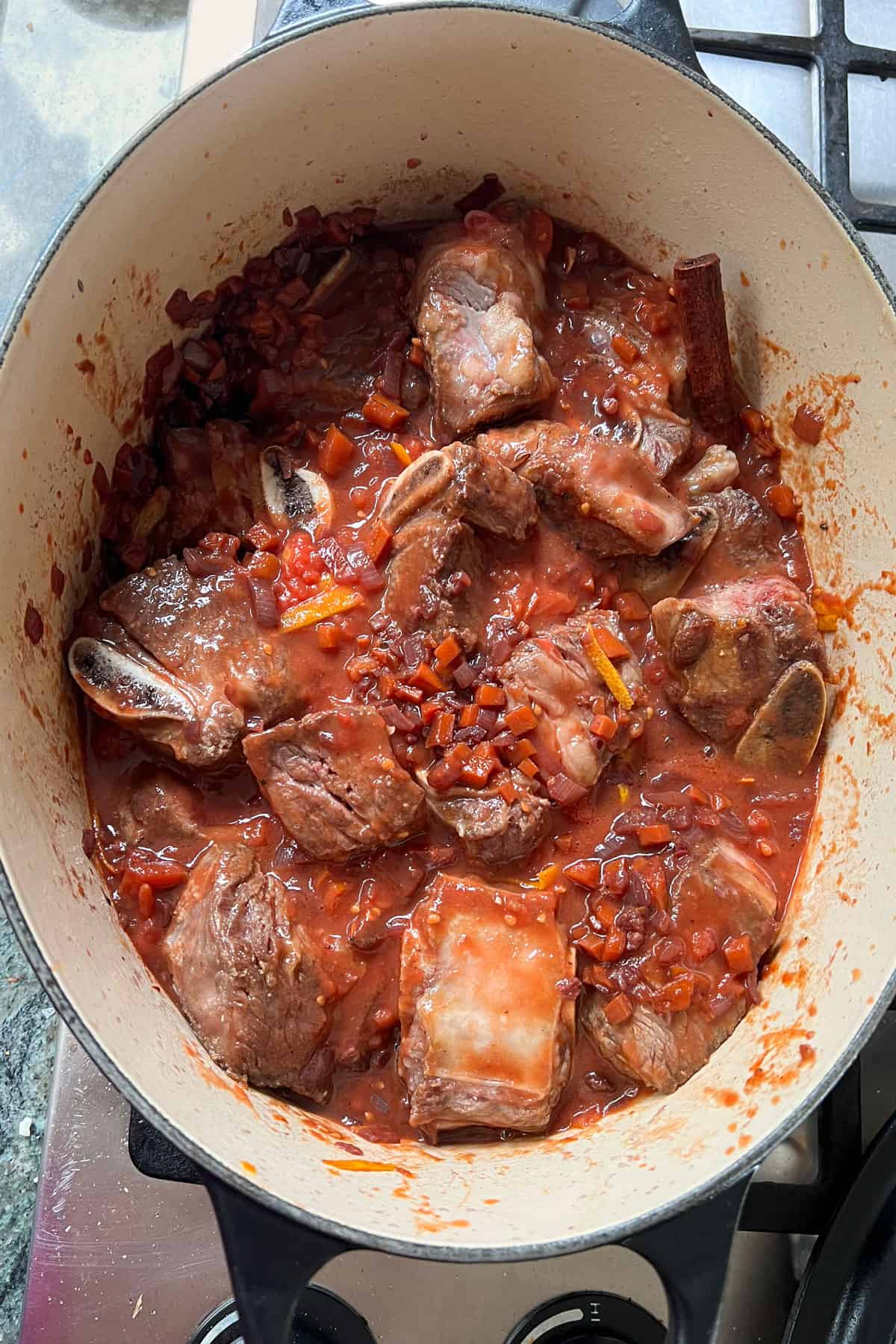
Yes, you can! If you’re out of cinnamon, feel free to substitute with other spices. Nutmeg or allspice could work well. Remember, it’s all about experimenting and finding what tastes best to you.
Conclusion
So, you’ve mastered the art of cinnamon braised short ribs with seasonal vegetables! It’s a dish that’s as flavorful as it’s vibrant.
The tender ribs, infused with the warmth of cinnamon and the richness of a slow braise, pair perfectly with the freshness of the vegetables.
Try this recipe out for your next dinner party; it’s sure to impress. Remember, the secret’s in the slow cook and the love you pour into your food.




